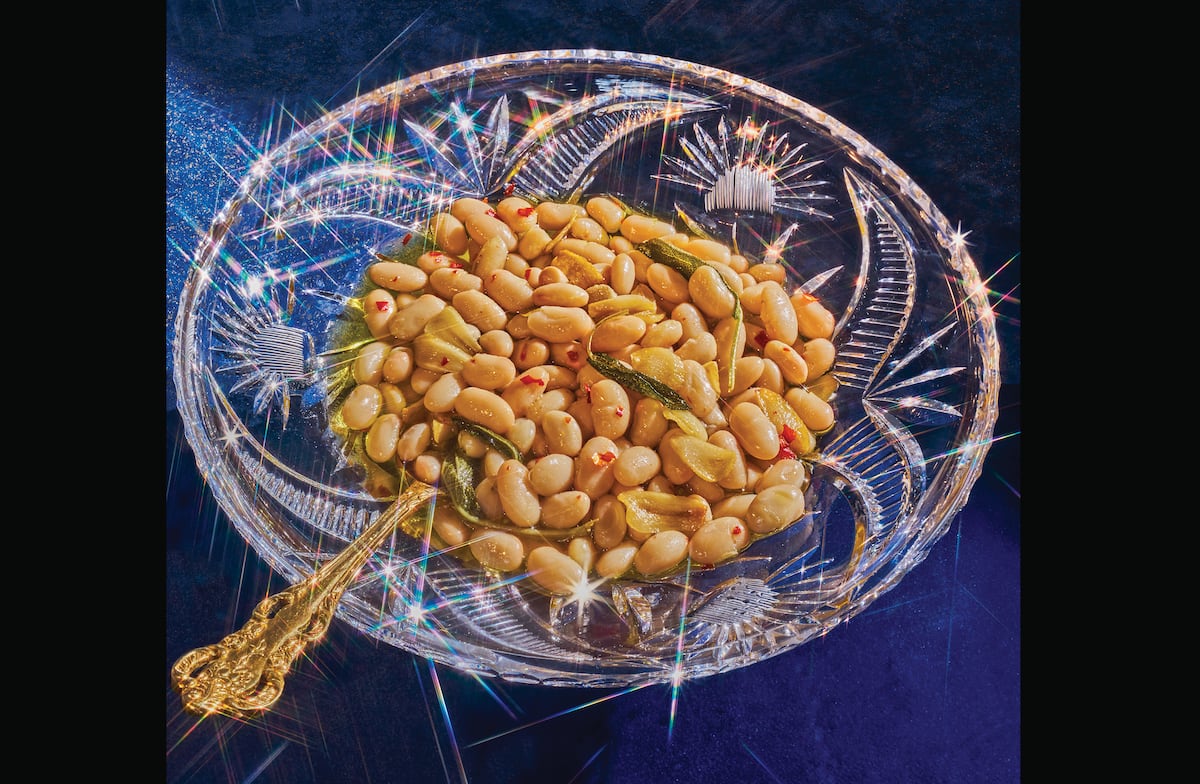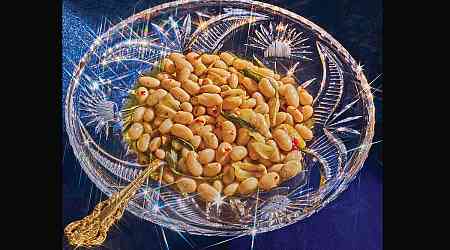This essay is part of What to Eat on a Burning Planet, a series exploring bold ideas to secure our food supply.
No politician wants to be the one to break the news that sooner than later, for the health of the planet, most of us are going to have to learn to eat a whole lot less meat — several times less red meat than what the average American consumes. This won’t be fixed by a few meatless Mondays.
We have a deep fatalism about our diets, and the conventional wisdom says that the only way to persuade the carnivorous to eat less meat is to offer them a faux alternative, such as lab-grown meat or a vegan substitute like Beyond Meat.
However, no one is born loving hot dogs or disliking broccoli and Brazil nuts; our food preferences are learned. This fact carries with it a wonderful seed of hope for changing diets for the better by helping people learn new tastes. When it comes to food, pleasure is what changes the world, because few people make a habit of eating foods they dislike.
Think of the plethora of dishes, from avocado toast to kale salad, that have entered the American mainstream despite being virtually unknown a generation ago. I sometimes wonder how baffled my Dorito-eating younger self would be by middle-aged me, who would rather eat some gorgeous roasted oyster mushrooms or a vibrant plate of charred asparagus than anything from McDonald’s. Don’t get me wrong. I still love a roast chicken or some barbecue ribs. But I don’t love them more than I do a silky eggplant sandwich or a spicy cauliflower shawarma.
What would it take to encourage Americans to adopt more sustainable tastes? Telling people that they are wrong to enjoy eating cheese or candy or bacon is clearly not the way to go. The stomach — like the heart — knows what it knows. A far more productive approach would be to help people discover new preferences for some of the foods that should play bigger roles in our diets.
Take beans. Really — take some beans! They, along with peas, lentils and other legumes, are everything meat is not in sustainability terms: far less thirsty per gram of protein than the water-guzzling operations that serve up America’s beef and chicken and good for soil quality, drawing in nitrogen and reducing the need for fertilizer.
So how can millions of people divert some of their love for meat toward beans?
Five years ago I helped found a charity, TastEd (short for Taste Education), to give British schoolchildren opportunities to experience vegetables and fruits in the classroom with all five senses. It is a glorious thing to witness reluctant eaters taking their first bites of carrot or plum or even canned chickpea and actually enjoy them, embarking on the journey from fear to curiosity and joy that is at the heart of what it means to be an omnivore. If our hunter-gatherer ancestors didn’t have the ability to enjoy a range of flavors, it’s difficult to imagine that they could have thrived.
Eating beans (or whole grains or dark, leafy vegetables) doesn’t, admittedly, offer quite the same buzzy payoff as other tastes we acquire, such as an India pale ale or a double espresso. There are signs, however, that when a bean conversion does happen, it can be an almost religious experience.
During the pandemic, food influencers on social media trumpeted the joys of brothy beans. Bean liquor — which older recipes foolishly told us to rinse away — can be as richly moreish as chicken soup, especially if you double up on the umami with some Parmesan cheese or miso.
Paul Newnham, an Australian policy expert who helped found a campaign called Beans Is How, with a goal to double global bean consumption by 2028, has tried to tap into the power of restaurateurs to influence ideas of what is desirable. Last fall, he and others worked with around 50 restaurants across New York City and Jersey City, N.J., to promote bean dishes, such as shelling bean stew, the delicate turmeric-and-sorrel-scented broth served at Family Meal at Blue Hill. The campaign said it reached at least four million Instagram followers.
When you serve people a bowl of well-cooked beans, even a simple one, it doesn’t take much to convince them that beans are delicious. A dish of white beans — cooked until soft and drizzled with oil, crispy sage and garlic — has all the comfort of mashed potatoes. You’re not eating it because it’s high in sustainable protein but because each spoonful sends you back for another one.
Steve Sando, the founder of the Rancho Gordo brand of gorgeously tinted beans, does not simply market his products as health food or green food. Rather, he says, he talks to potential customers about how magical it feels to “take a pound of rocks and turn them into something creamy and delicious.”
If the U.S. government wants to get serious about encouraging people to eat beans, it should offer workshops and online videos on delicious, easy ways to cook them. Consider South Korea. In the 1980s, the country’s Rural Development Administration, in an effort to preserve traditional cuisine and support local farmers, trained thousands of workers to lead monthly sessions on how to cook traditional Korean foods such as kimchi, steamed rice, and soup and braised vegetables. It seems to have helped. Traditional foods continue to represent a large part of the Korean diet, and survey data suggests that South Koreans ate a similar quantity of vegetables in 2009 as they did in the late 1960s.
The anthropologist Claude Lévi-Strauss said that food cannot only be good to eat, it must also be “good to think.” To start seeing beans as something to crave, you need to imagine them as desirable.
Of course, this won’t happen overnight. As of 2019, the average American consumed roughly 55 pounds of chicken a year compared with about one pound of dried black beans, or around 2.5 pounds once they are cooked.
But there are signs of progress. The proportion of Americans who consume chickpeas has more than doubled since 2003, in part thanks to the popularity of hummus, which taught many skeptics that those strange, round things could actually become a rich, savory dip. From the joys of hummus, it’s only a short step to discovering the delight of an Indian chana masala (which can be whipped up in a trice with a can of chickpeas and a few spices) or a Spanish chickpea stew.
If the bean industry wants to sell more of its product, it should consider displaying varieties proudly in glass, like a jar of fine olives. Bold Bean Co., a British company, delivers tall jars of gourmet beans with names such as Queen Butter Beans, which are plumper and more flavorful than most others on the market in Britain. As the company’s founder told me, putting beans in a glass jar helped shoppers see her products as “premium and desirable.”
We can also learn from cultures that already revere beans, from hearty Brazilian feijoada to the hoppin’ john of South Carolina or the pasta fazool of Italian Americans. Ibraheem Basir, who sells seasoned cooked beans in pouches under the brand A Dozen Cousins, told me that for many of his Black customers, beans offer a “cultural connection” to healthy eating.
Yes, beans still have a low profile compared to meat, not least because the bean industry lacks the clout of the meat industry, which pours millions into lobbying. But this could change. If anyone tells you Americans will never enjoy beans as much as they do meat, think of just a few of the once little-known foods, from pesto to tofu and gochujang, that have been welcomed gratefully onto American tables in recent decades. The more new plant foods a person learns to enjoy, the less room there is on the plate for hamburgers.
Bee Wilson is the author, most recently, of “The Secret of Cooking: Recipes for an Easier Life in the Kitchen.” This article originally appeared in The New York Times.
function onSignUp() { const token = grecaptcha.getResponse(); if (!token) { alert("Please verify the reCAPTCHA!"); } else { axios .post( "https://8c0ug47jei.execute-api.us-east-1.amazonaws.com/dev/newsletter/checkCaptcha", { token, env: "PROD", } ) .then(({ data: { message } }) => { console.log(message); if (message === "Human





























